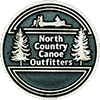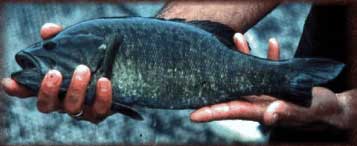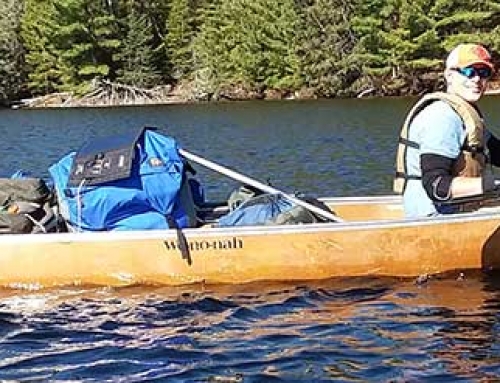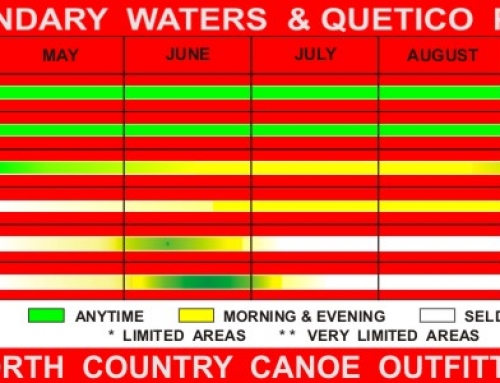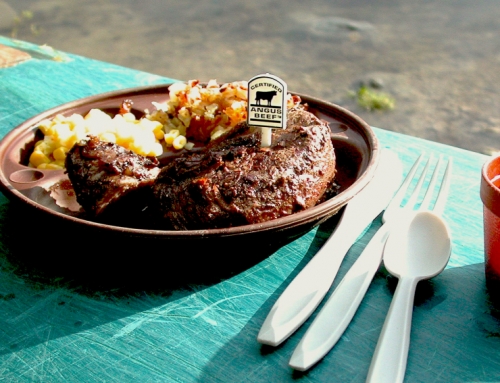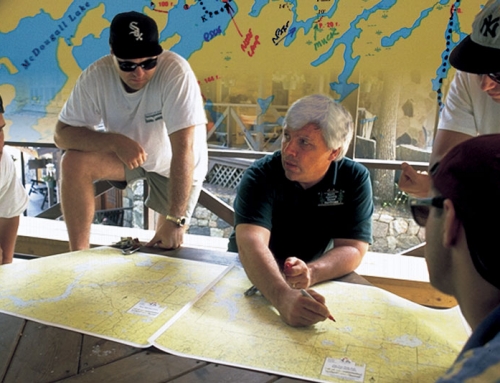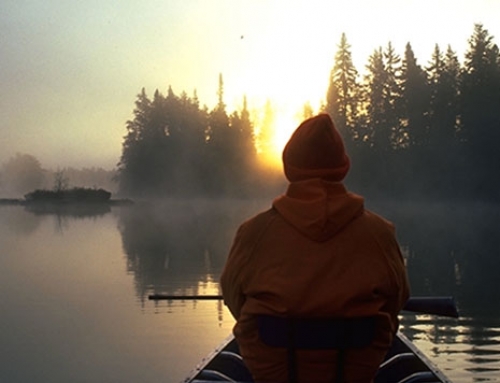NEW YORK, MONDAY, SEPTEMBER 18 –
OUTDOORS
By Howell Raines
Over the years, I have learned the hard way that from the standpoint of the fly fisherman, not all wilderness outfitters are created equal. So when I got ready for a long-anticipated trip into the Quetico/Superior wilderness, I took some care in choosing among the firms located in the town of Ely, Minnesota (pop.3,600) near the Canadian Border.
I figure I had my man when John Schiefelbein interrupted my string of questions with a request. “Tell me exactly what you want to do on this trip. What is your top priority?”
That’s easy,” I said. “We want to catch smallmouth bass on fly rods.”
“Do you mind working to get to your fish?” Schiefelbein said, explaining that portages of up to a half mile or more may separate many of the 2,700 lakes in the Superior National Forest of northern Minnesota and the adjoining Quetico Provincial Park in Ontario, Canada.
“That’s not a problem,” I said with the assurance of a middle-aged desk jockey who has a 17-year-old son to carry his canoe.
“Then I will send you to the best place in the world,” said Schiefelbein.
And maybe he did. Certainly, our 11-day trip into the area of Lac La Croix and Crooked Lake, the two big bodies of water along the border with Ontario, produced fishing so exceptional it may have ruined us for our usual haunts on the Potomac, Shenandoah, and Rappahannock river systems in Virginia.
It is possible to get a lot of bad information about fishing tackle for this area, which is known as the Boundary Waters Canoe Area. Most guidebooks recommend seven- and eight-weight fly rods. My son Jeffrey and I had these for windy days and throwing big streamers for northern pike. But we preferred our delicate five-weight rods, which were especially fine when smallmouth were slurping the tiny poppers that were designed for bluegills. In general, deer hair bugs out fished cork. In streamers, Clouser’s Deep Minnow in the brownish-red sculpin color pattern was best, but I would not go without a good supply of Wooly Buggers.
We also disregarded the advise to take spinning tackle in the 10- to 20-pound range. We fished ultralight rods and four- and six-pound lines with great success. Even when heavy spinner baits for northerns or trolling for lake trout, we managed with slightly stiffer rods and eight-pound line.
Surprisingly, fly fishing is in its infancy hereabouts, and given meat-fishing ethos, it is still considered effete by some natives. Schiefelbein is an exception.
“I think we have some of the best freshwater fishing in the United States if you consider quality and number of species,” he said. He listed northern pike, walleye, smallmouth and largemouth bass, lake trout, crappie, bluegill, yellow perch, and brook trout. “And a few muskies,” added his wife Kathy.
The Schiefelbeins, both former IBM marketing executives, founded North Country Canoe Outfitters (474 Kawishiwi Trail, Ely, MN 55731; (800) 552-5581) in 1984 when they tired of the corporate grind in Kansas City. They specialize in tailoring trips to the specific interests of their clients, be they bird watchers, photographers, canoeists, or fishermen.
It should be noted that there are many reputable outfitters in Ely. A call to the Ely Chamber of Commerce will bring a deluge of brochures. But I was drawn to Schiefelbein’s approach to planning fishing trips. He is one of a few outfitters to make annual scouting trips to check on new campsites and fishing spots. He keeps an exhaustive computer listing of the best places and provides maps with the fishing areas marked by species.
Canoe camping is not for everyone. At dusk every day, I was reminded of the warning of my neighbor Joe Perpich, who grew-up in nearby Hibbing, Minn., that the state bird of Minnesota is the mosquito. Nor is it the cheapest thing you can do. Our outfitting bill for two people (including 11-days of food and equipment, two night’s accommodations at Schiefelbein’s base, our float plane flight into one of the more remote reaches of Quetico Park), came to $1,500.
But as the balm of wilderness flowed over me, I was reminded of W.B. Yeats’ description of the lake at Innisfree as a place where “peace comes dropping slow.” So it comes, too, in the lakes of the north country, and the appeal is not entirely fishing.
For my son and me, these were days of profound companionability. In the evenings, I had the pleasure of watching Sam Clemens work his magic as Jeffrey plunged into the copy of Huckleberry Finn I had packed for him. His flashlight shone far into the night.
At such moments, I allowed myself a bit of self-congratulation for giving him a chance to discover this book in a place where it is still possible to glimpse the untamed continent that Clemens knew. In all this — our nation’s greatest yarn, the Ojibwa spirit drawings upon the rocks, the moose among the lily pads, the brown fish falling from our fingers into the darkness of their home waters — were memories a man might carry at the center of his heart for years, for a lifetime, perhaps.
